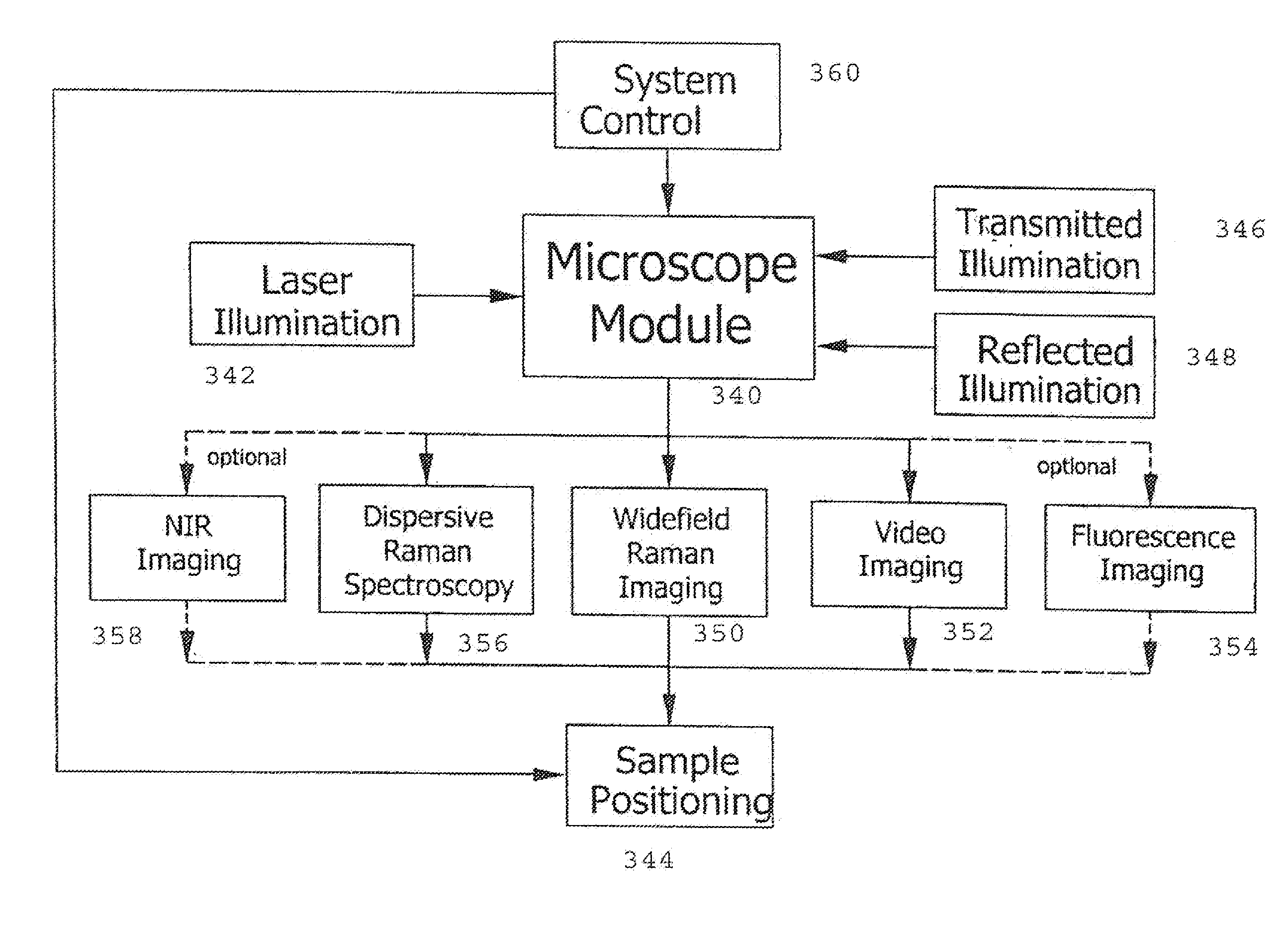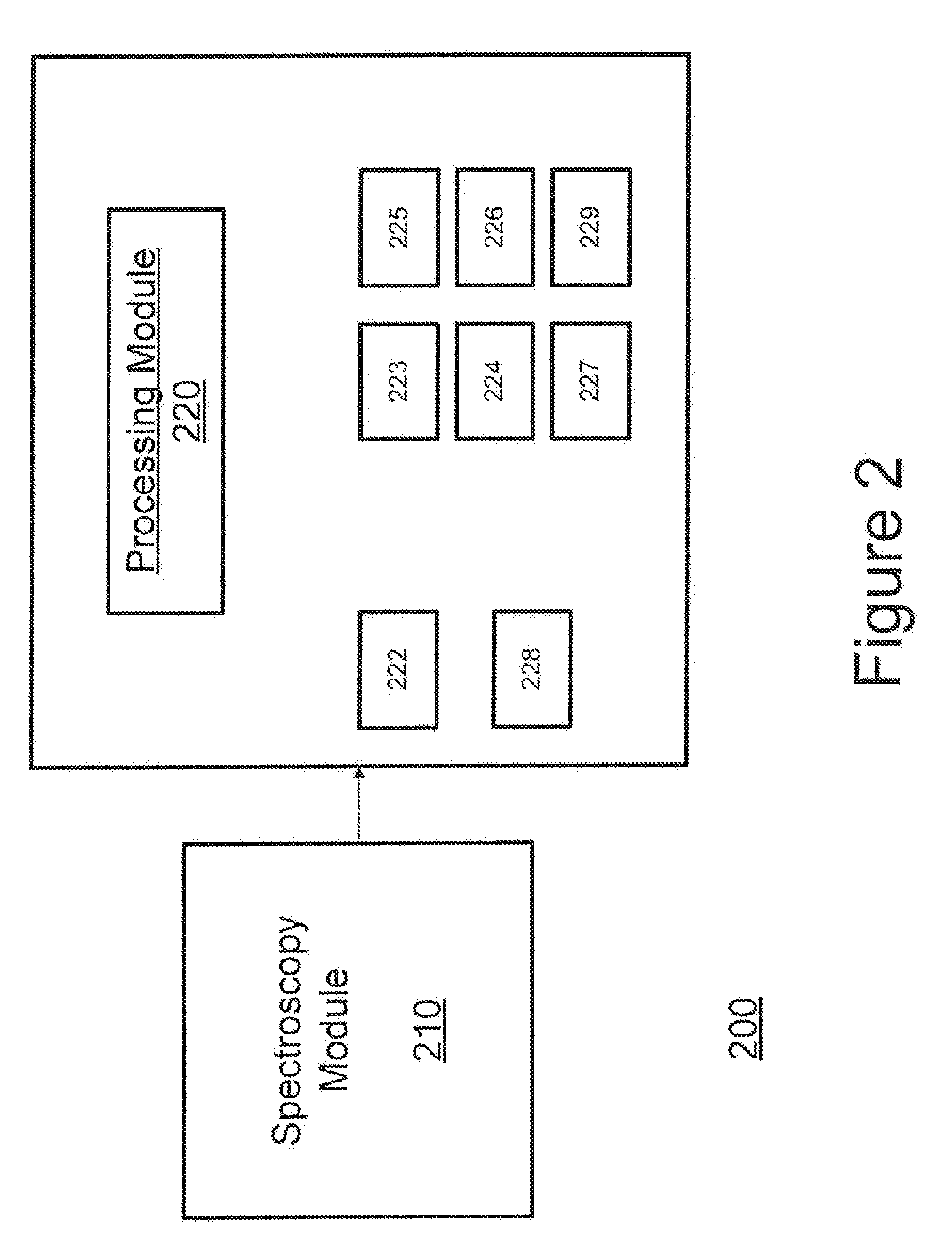Raman Characterization of Transplant Tissue
a technology of transplant tissue and characterization, applied in the field of characterization of transplant tissue, can solve the problem of not knowing and achieve the effect of predicting the development of chronic rejection
- Summary
- Abstract
- Description
- Claims
- Application Information
AI Technical Summary
Problems solved by technology
Method used
Image
Examples
Embodiment Construction
[0019]Reference will now be made in detail to the preferred embodiments of the present disclosure, examples of which are illustrated in the accompanying drawings. Wherever possible the same reference numbers will be used throughout the drawings to refer to the same or like parts.
[0020]The systems and methods of the present disclosure provide for the classification of a disease state of a biological tissue sample. FIG. 1 illustrates one method of the present disclosure. The method 100 comprises illuminating a sample with substantially monochromatic light to thereby produce Raman scattered photons in step 110. The Raman scattered photons are assessed in step 120 to thereby generate a Raman spectroscopic data set representative of the sample. In one embodiment, the spectroscopic data set may include at least one of: a Raman spectra and a spatially accurate wavelength resolved Raman image. In step 130, the Raman spectroscopic data set is evaluated using a chemometric technique to thereb...
PUM
| Property | Measurement | Unit |
|---|---|---|
| specific angle | aaaaa | aaaaa |
| wavelength | aaaaa | aaaaa |
| Raman shift | aaaaa | aaaaa |
Abstract
Description
Claims
Application Information
 Login to View More
Login to View More - R&D
- Intellectual Property
- Life Sciences
- Materials
- Tech Scout
- Unparalleled Data Quality
- Higher Quality Content
- 60% Fewer Hallucinations
Browse by: Latest US Patents, China's latest patents, Technical Efficacy Thesaurus, Application Domain, Technology Topic, Popular Technical Reports.
© 2025 PatSnap. All rights reserved.Legal|Privacy policy|Modern Slavery Act Transparency Statement|Sitemap|About US| Contact US: help@patsnap.com



